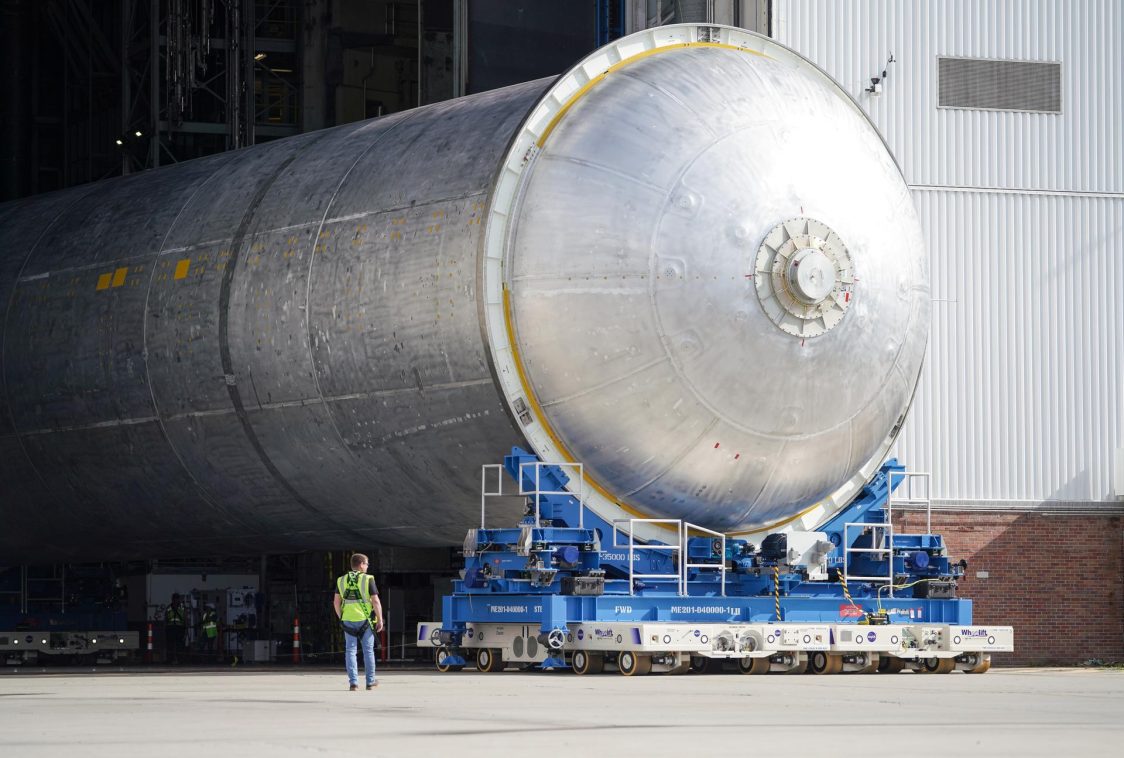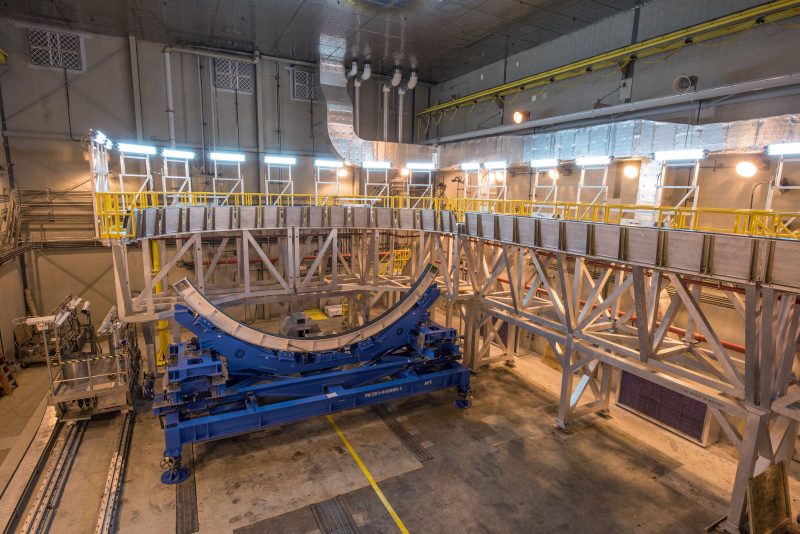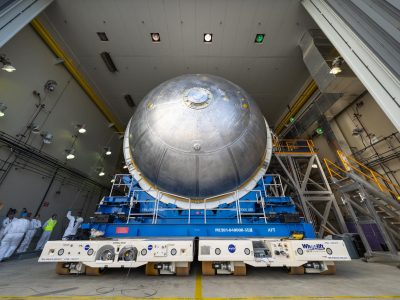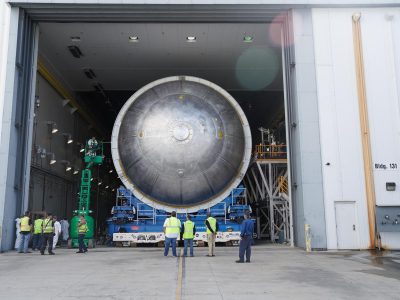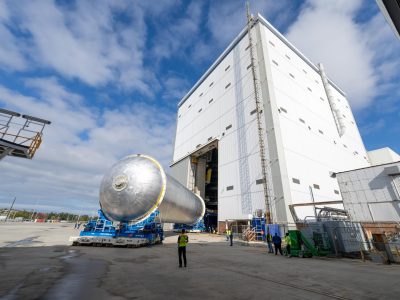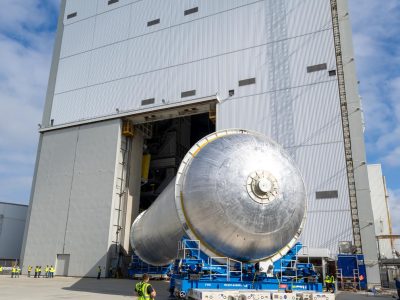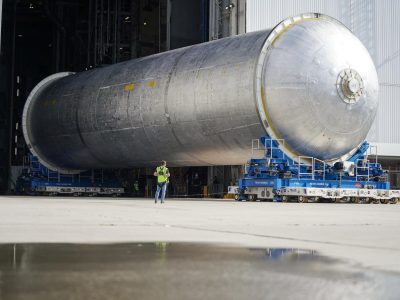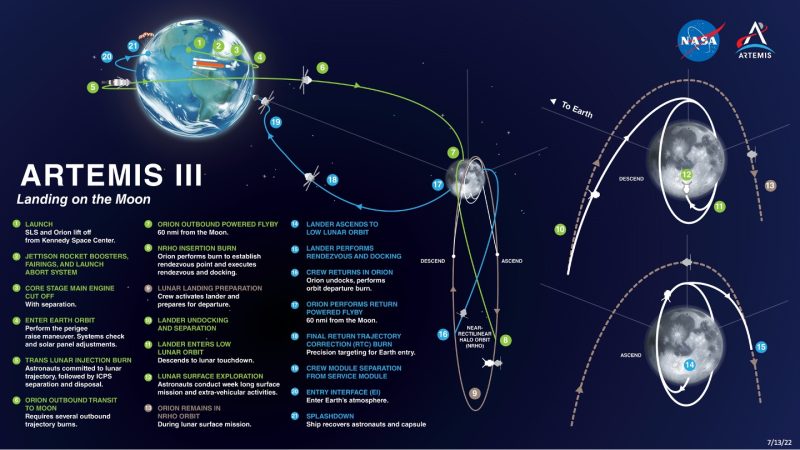NASA‘s Artemis program continues its forward march as technicians at the Michoud Assembly Facility in New Orleans meticulously move the core stage’s liquid hydrogen tank to a priming cell near the Vertical Assembly Building. This crucial step in the preparation for the Artemis III mission involves surface treatment by sanding down the tank before applying primer. The automated robotic tool precisely coats the barrel section, while manual application ensures thorough priming of the forward and aft domes. Post priming, the tank undergoes the application of a foam-based thermal protection system, safeguarding it from extreme temperatures during launch and flight. This tank, a pivotal component of the 212-foot-tall rocket stage, collaborates with the RS-25 engines to generate two million pounds of thrust, propelling NASA’s Orion spacecraft and astronauts towards the lunar surface for the Artemis mission.
“Teams move the core stage liquid hydrogen tank for the Artemis III mission to a priming cell near the Vertical Assembly Building at NASA’s Michoud Assembly Facility in New Orleans Nov. 21. Technichians will sand down and prepare the suface of the tank before coating it in a primer. Primer is applied to the barrel section of the tank by an automated robotic tool, whereas the forward and aft domes are primed manually.
Once priming is complete, technicians with NASA and Boeing, the SLS core stage prime contractor, will apply a foam-based thermal protection system, which protects the propellant tank from the extreme temperatures it will face during launch and flight while also regulating the super-chilled propellant within it. The propellant tank is one of five major elements that make up the 212-foot-tall rocket stage. The core stage, along with its four RS-25 engines, produce two million pounds of thrust to help launch NASA’s Orion spacecraft, astronauts, and supplies beyond Earth’s orbit and to the lunar surface for Artemis. ” – via NASA Image and Video Library
SLH2 CS3 Being Moved to Cell P
- Image credit: NASA / Steven Seipel
- Image credit: NASA / Steven Seipel
- Image credit: NASA / Steven Seipel
- Image credit: NASA / Steven Seipel
- Image credit: NASA / Steven Seipel
- Image credit: NASA / Steven Seipel
Futuramic’s Tooling and Flight Hardware for the World’s Most Powerful Deep Space Rocket
Futuramic, with its dynamic team of over 200 dedicated associates, stands at the forefront of the design, build, installation, certification, and maintenance of vital tooling essential for assembling the core stage of the world’s most powerful deep space exploration rocket. This core stage, fueled by liquid hydrogen and liquid oxygen, plays a pivotal role in propelling the crew capsule and service module from Earth’s surface to a high Earth orbit.
Going beyond the core stage, Futuramic has been a key player in manufacturing large-scale structural flight hardware for Artemis II and future missions. What sets Futuramic apart is its in-house developed, unique manufacturing process, showcasing an innovative approach to aerospace manufacturing.
Futuramic’s expertise and unwavering commitment to quality have made them an indispensable partner in advancing space exploration. Their significant role in the Artemis program reflects their dedication to pushing boundaries and realizing ambitious missions that expand our understanding of the Moon and beyond.
As we step into a new era of lunar exploration, Futuramic’s contributions become pivotal, paving the way for future space missions. Their manufacturing prowess and ability to deliver exceptional tooling and flight hardware underscore their commitment to excellence in the aerospace industry.

